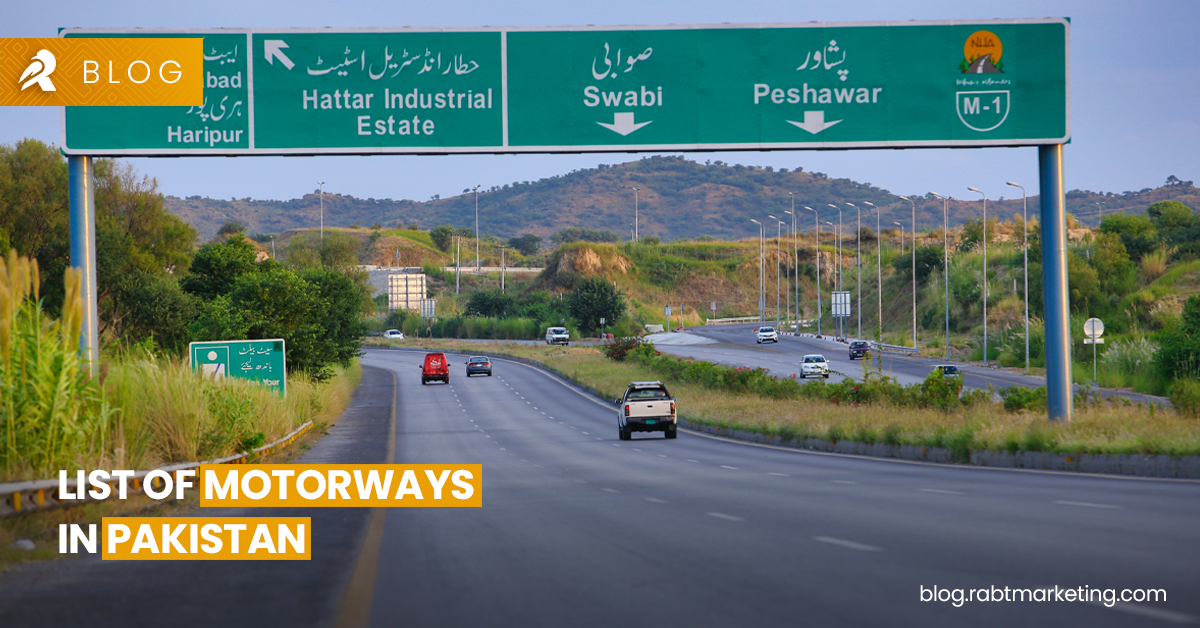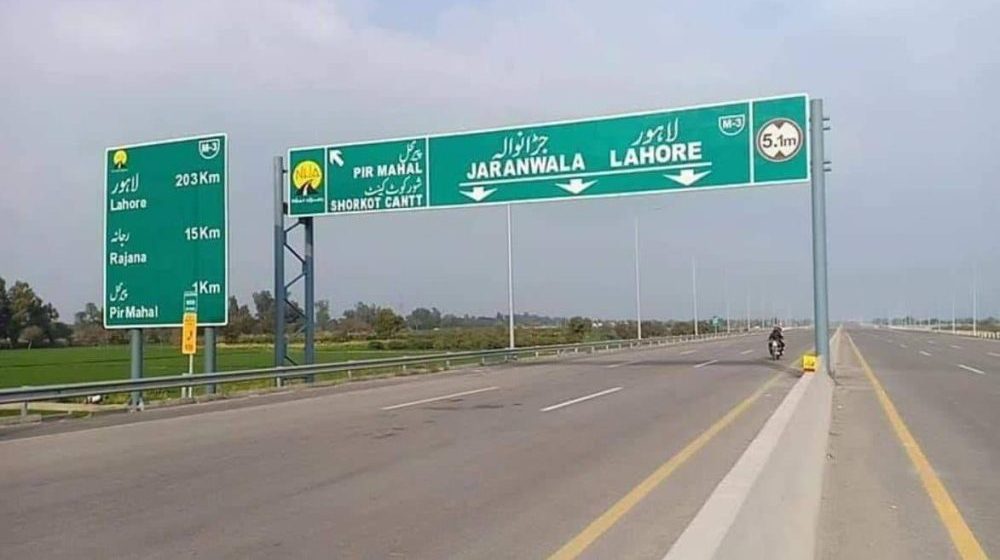Motorways are a vital part of our infrastructure, connecting us to our jobs, homes, and loved ones. They also play a significant role in the economy, helping to move goods and services around the country.
The motorways in Pakistan are considered some of the best in the world. They are well-maintained and have excellent safety features. The motorways have also helped improve Pakistan’s economy by making it easier to transport goods and people.
If you are planning to travel in Pakistan, I recommend using the motorways. They are a safe and efficient way to get around the country. In this blog, you will find a list of all the motorways in Pakistan. Find out your route and start your journey.
Motorways in Pakistan
Historically and culturally, Pakistan is a rich country. In addition, it is also a country with a rapidly growing economy. One of the key drivers of this economic growth is the motorways. These motorways connect cities and towns across the country, making it easier for people to travel and do business. The motorways in Pakistan are operated by the National Highway Authority (NHA), a government agency responsible for the construction, maintenance, and operation of the national highways and motorways in Pakistan. As of 2023, there are 12 operational, 3 under construction, and 1 planned motorway in Pakistan.
The construction of motorways in Pakistan has brought many benefits to the country. These benefits include:
- Increased connectivity between cities and towns
- Reduced travel time
- Increased trade and commerce
- Creation of jobs
- Boosting economic activity
However, some challenges lie ahead for the motorways in Pakistan. These challenges include:
- Maintenance of the motorways
- Security of the motorways
- Traffic congestion
- Accidents
Despite these challenges, constructing motorways in Pakistan is a positive development that benefits the country. With a bit of planning and preparation, driving on a motorway in Pakistan can be a safe and enjoyable experience.
Also, Check Our Blog Post: Top Museums in Pakistan: A Comprehensive Guide
List of Motorways in Pakistan
Here is a list of all the motorways in Pakistan.
| Name | Route | Lanes | Length | Status |
| M-1 | Peshawar–Islamabad | 6 | 155 | Operational |
| M-2 | Islamabad–Lahore | 6 | 367 | Operational |
| M-3 | Lahore–Abdul Hakeem | 6 | 230 | Operational |
| M-4 | Pindi Bhattian–Multan | 4-6 | 309 | Operational |
| M-5 | Multan–Sukkur | 6 | 392 | Operational |
| M-6 | Sukkur-Hyderabad | 6 | 306 | Under construction |
| M-7 | Dadu–Hub | – | 270 | Planned |
| M-8 | Ratodero–Gwadar | 2 | 892 | Partially operational |
| M-9 | Hyderabad–Karachi | 6 | 136 | Operational |
| M-10 | Karachi Northern Bypass | 2 | 57 | Operational |
| M-11 | Lahore–Sialkot | 4 | 103 | Operational |
| M-12 | Sialkot – Kharian | 4 | 69 | Under construction |
| M-13 | Kharian – Rawalpindi | 4 | 117 | Under construction |
| M-14 | Islamabad–D.I Khan | 4 | 285 | Operational |
| M-15 | Hasan Abdal–Thakot | 6-4-2 | 180 | Operational |
| M-16 | Swabi – Chakdara | 4 | 160 | Operational |
M1 (Peshawar-Islamabad)
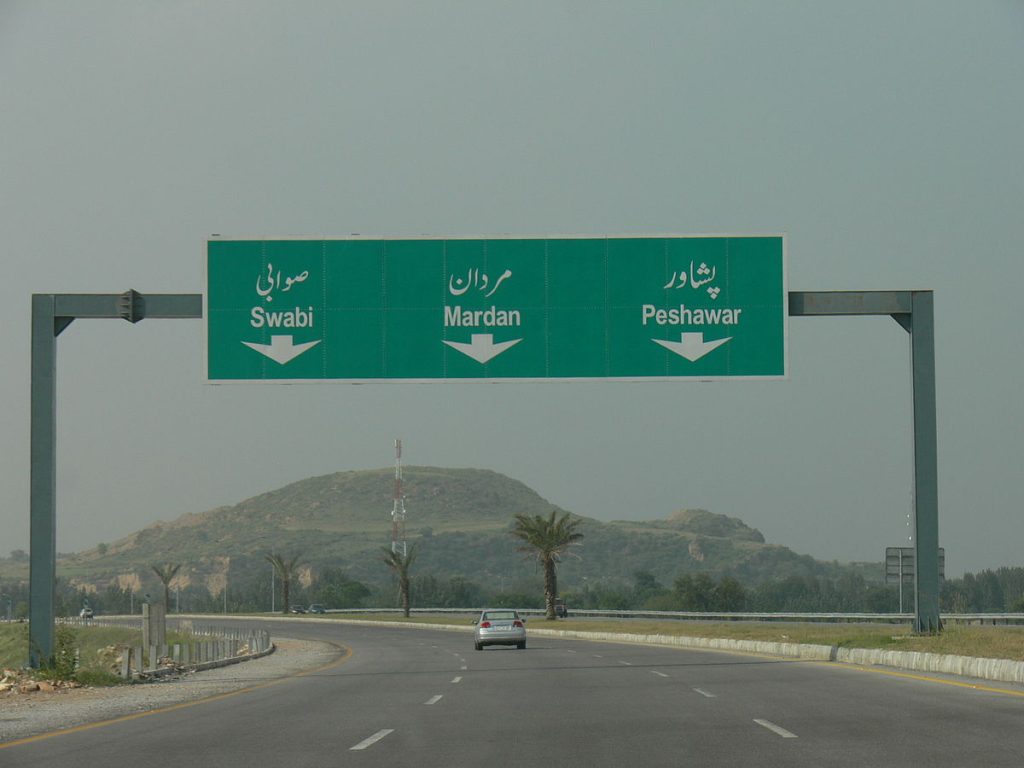
The M-1 motorway connects the cities of Peshawar and Islamabad. The motorway was completed in 2007 during President Pervez Musharraf’s rule and cost Rs. 13 billion. It spans 155 km, with 88 km in Khyber Pakhtunkhwa and 67 km in Punjab.
The motorway has six lanes, rest stops, and 14 interchanges at various locations. It also has major bridges over the Haro, Indus, and Kabul rivers, flyovers, underpasses, and culverts. There are 10 service areas along the route. The motorway is a major transportation corridor in Pakistan and is used by both commercial and passenger traffic. It has helped reduce travel time between Peshawar and Islamabad from 12 to 4 hours.
M2 (Islamabad-Lahore)
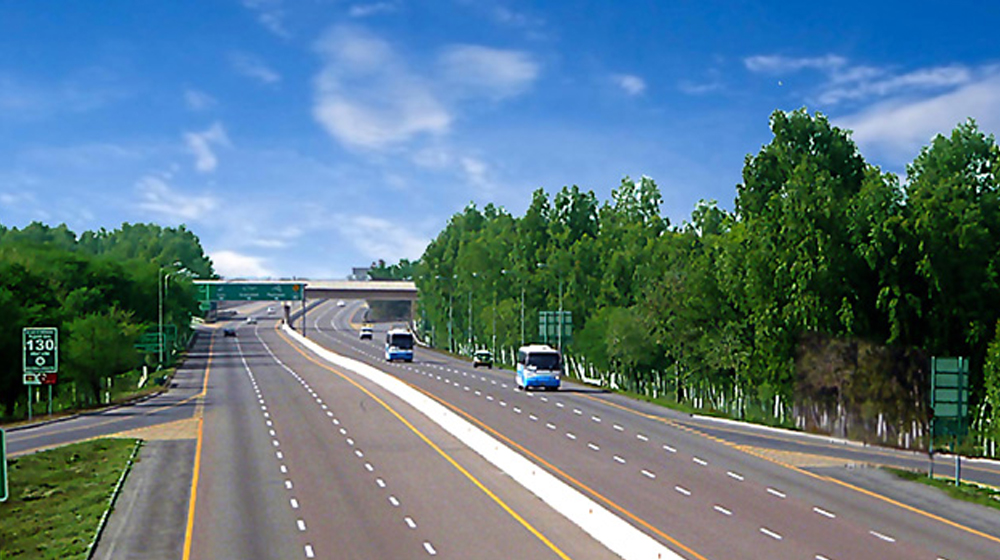
The M2 motorway is a controlled-access highway in Pakistan that connects the capital city of Islamabad with Lahore. The motorway is 367 kilometers long and was completed in 1997. It is the first motorway built in South Asia and the longest motorway in Pakistan.
The motorway construction was completed in November 1997 during Prime Minister Nawaz Sharif’s rule, costing over Rs. 60 billion. The M-2 has service and rest areas with facilities such as fueling, car wash, car repair, and fast-food restaurants. It has six lanes and rest areas along the route, including restrooms and eateries.
M3 Motorway Lahore–Abdul Hakeem is a 6-lane controlled-access highway in Pakistan. It is part of the National Highway Network and connects Lahore with Abdul Hakeem, a town in Mianwali District. The motorway is 230 kilometers long and was completed in 2019.
It is a parallel road to the M-4 Motorway and connects the Lahore end of the M-2 Motorway to the M-4 near Abdul Hakeem. The total distance from Lahore to Multan via the M-3 and M-4 Motorways is 333 kilometers. The M-3 Motorway has rest areas along the route and intersects with three railway lines. It reduces travel time compared to the previous route on National Highway N5.
M4 (Pindi Bhattian–Multan)
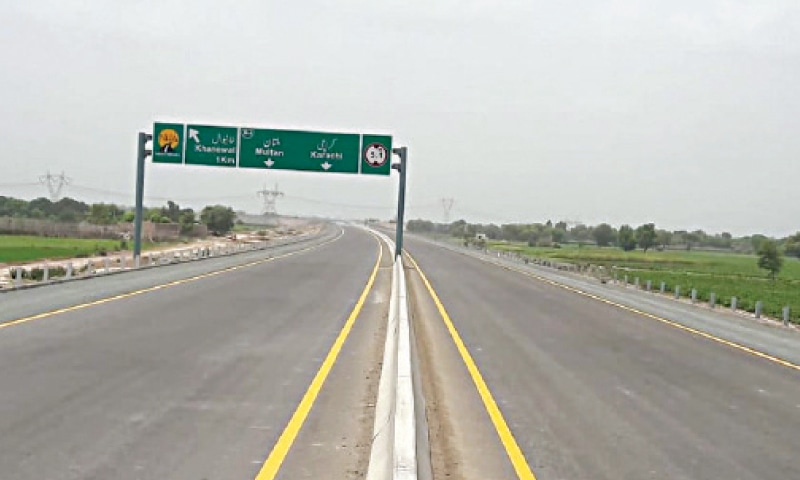
The M4 motorway connects the cities of Faisalabad and Multan and is 309 km long. The motorway was inaugurated in parts, with different sections opened at different times. The M4 motorway passes through various cities and is surrounded by agricultural lands. It is also close to a railway line for a part of its route.
The motorway was completed in 2014 and is operated by the National Highway Authority. It is a four-lane highway with a speed limit of 120 kilometers per hour (75 mph). It has two service areas and 13 interchanges.
M5 (Multan–Sukkur)
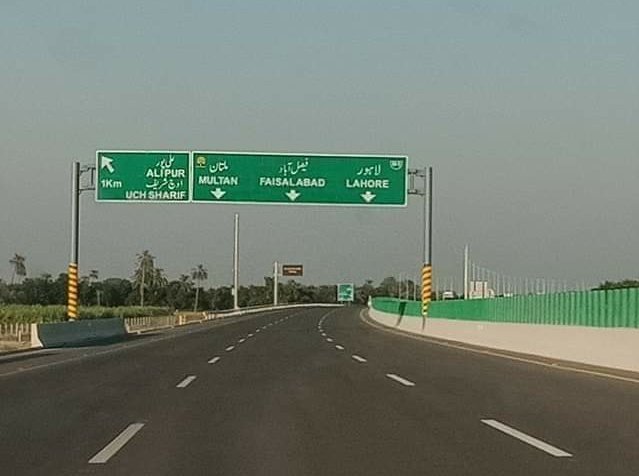
The M5 Multan–Sukkur motorway is a 392-kilometer (244 mi)-long controlled-access motorway in Pakistan that connects the cities of Multan and Sukkur. The motorway was constructed by the China State Construction Engineering Corporation (CPEC) and was completed in 2018. It has six lanes and a speed limit of 120 kilometers per hour (75 mph). The motorway has reduced travel time between Multan and Sukkur from 10 to 4 hours. It has also improved connectivity between the two cities and has boosted economic activity in the region.
The M5 motorway is a major infrastructure project in Pakistan. It has been praised for its quality and its contribution to economic development. However, it has also been criticized for its high cost and for the displacement of people who lived along its route.
M6 (Sukkur-Hyderabad)
The M-6 motorway, also known as the Sukkur-Hyderabad motorway, is an under-construction motorway in Pakistan. It will connect Sukkur to Hyderabad and will be an essential link between Karachi and Peshawar. The motorway will have six lanes. The project is part of the China-Pakistan Economic Corridor (CPEC) and is expected to cost around $1.7 billion.
The construction of the motorway has faced delays but is now scheduled to be completed in 30 months. The financing for the project will be done through public-private partnerships. The motorway route will connect to other highways and cities in Sindh and will eventually reach Multan and Islamabad.
M-7 (Dadu–Hub)
The M7 is a planned highway that will connect Dadu to Hub. It is part of a road from Islamabad to Karachi, and the M7 section goes from Ratodero to Karachi, which is about 540 kilometers long.
The M7 will start at Ratodero, near Sukkur, where it will join with the M6 from Multan and cross the M8, which goes to Gwadar at the Iran border. From there, the M7 will go south along the Indus River and pass through various cities, with Larkana being the most important. However, the road must go through the Kirthar Range, a low mountain range.
M-8 (Ratodero–Gwadar)
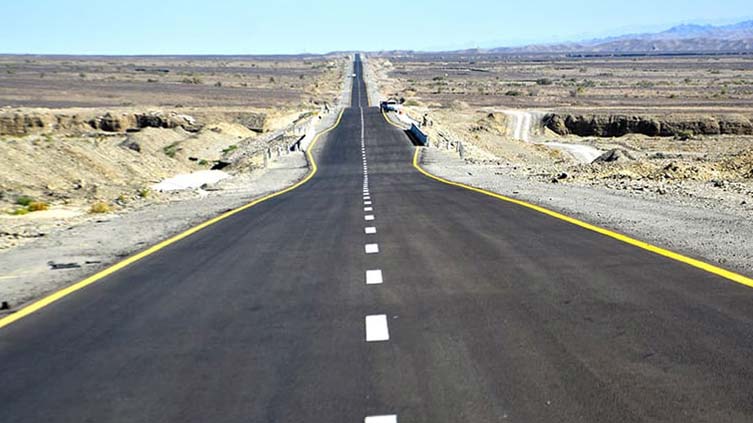
The M-8 motorway is a road in Pakistan that connects Sukkur-Larkana to Gwadar. It is currently under construction, with a 193-kilometer stretch between Gwadar and Hoshab completed in February 2016. Half of the motorway from Gwadar to Hoshab is currently operational with two lanes, and the remaining two lanes will be added once the motorway is fully operational. The completion date for the entire motorway is still being determined due to the challenging terrain.
The motorway starts in Ratodero, Sindh Province, and passes through Balochistan Province, near the towns of Khuzdar, Awaran, Hoshab, and Turbat, before joining the Makran Coastal Highway near Gwadar. It will have a total length of 892 kilometers and initially be built with two lanes, which will later be expanded to four lanes.
M9 (Hyderabad–Karachi)
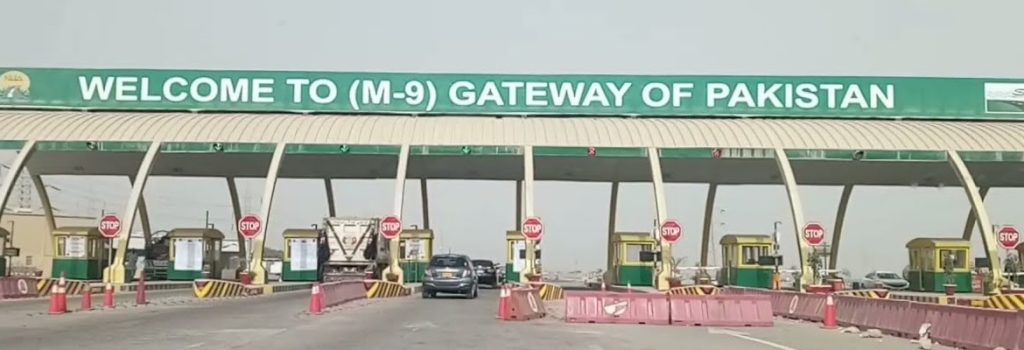
The M-9 road is very important in Pakistan because it connects the cities of Karachi and Hyderabad. It is 136 kilometers long and built on the Karachi-Hyderabad Super Highway. The road was upgraded to have six lanes and eight interchanges along the way. Some famous housing societies like Bahria Town Karachi and DHA City are located along this road. A large interchange was recently opened on the M-9 road, connecting Sukkur and Bahria Town Karachi. A private real estate developer funded this interchange, and is the first of its kind in Pakistan.
M10 (Karachi Northern Bypass)
The M-10 motorway, also known as the Karachi Northern Bypass, is a 57 km two-lane road in Karachi, Pakistan. It connects the M-9 motorway to the Karachi Port, providing a convenient route for transporters and commuters to access the port without entering the city’s main arteries. The motorway begins north of Karachi and intersects with the M-9 through a trumpet interchange. It then heads west, connecting with the N-25 interchange, before turning south and merging with the KPT Flyover at Karachi Port.
Construction of the M-10 motorway began in June 2002 and was completed in 2007 under the supervision of Yousaf Barakzai from the National Highway Authority. The project, costing Rs. 3.5 billion was inaugurated by President Pervez Musharraf on August 6, 2007.
M11 (Lahore–Sialkot)
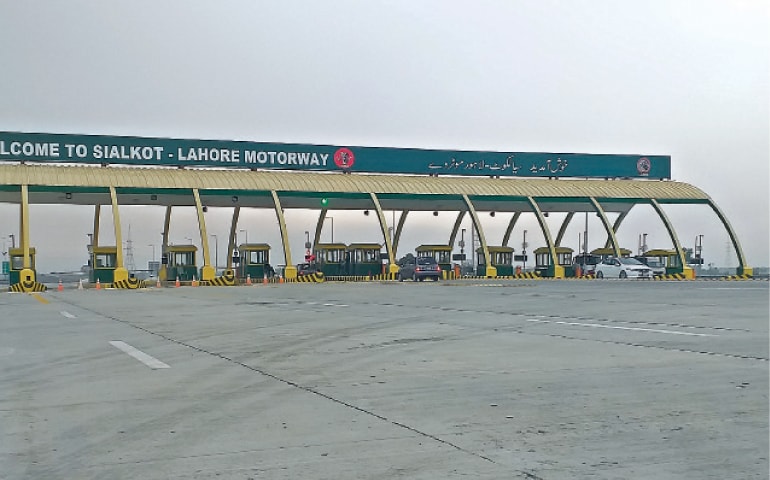
The Sialkot-Lahore Motorway (M11) is a north-south motorway in Punjab, Pakistan that connects the cities of Sialkot and Lahore. It was opened on March 18, 2020, and cost approximately 44 billion rupees to construct. The motorway spans a length of 103 kilometers. It has significantly reduced travel time between Sialkot and Lahore, with the journey now taking just 50 minutes compared to over 2 hours on the alternative N-5 route. The motorway includes 9 interchanges, 8 flyovers, 20 bridges, and 18 underpasses, enhancing the connectivity and accessibility of the region.
M12 (Sialkot – Kharian)
The M-12 motorway, also known as the Sambrial-Kharian motorway, is currently under construction since July 2022. Once completed, it will provide a connection between Sambrial and Kharian. Spanning a distance of 69 kilometers (43 miles), the motorway will feature 5 interchanges, a service area, and a bridge that stretches 1 kilometer (0.62 miles) across the River Chenab.
Initially, the M-12 will have four lanes, possibly expanding to six in the future. It is designed for a maximum speed of 120 km/h (75 mph) and is expected to be finished within 2 years.
M13 (Kharian – Rawalpindi)
The M-13 motorway, also known as the Kharian-Rawalpindi motorway, is currently being constructed in Pakistan. It will connect the cities of Rawalpindi and Kharian. The motorway will stretch over a distance of 117 kilometers (73 miles). It will feature 8 interchanges, 2 service areas, 26 bridges (including one over the River Jhelum), and two tunnels spanning a total of 1.9 kilometers (1.18 miles) across the Salt Range between Dina and Sohawa.
Once finished, the M-13 motorway will significantly reduce travel time between Islamabad and Lahore by one hour compared to the existing M2 Motorway. It will also help alleviate congestion on the N5 Highway, which runs parallel. It has a designed speed of 120 kilometers per hour (75 miles per hour) and is expected to be completed within 2 years.
M14 (Islamabad–D.I Khan)
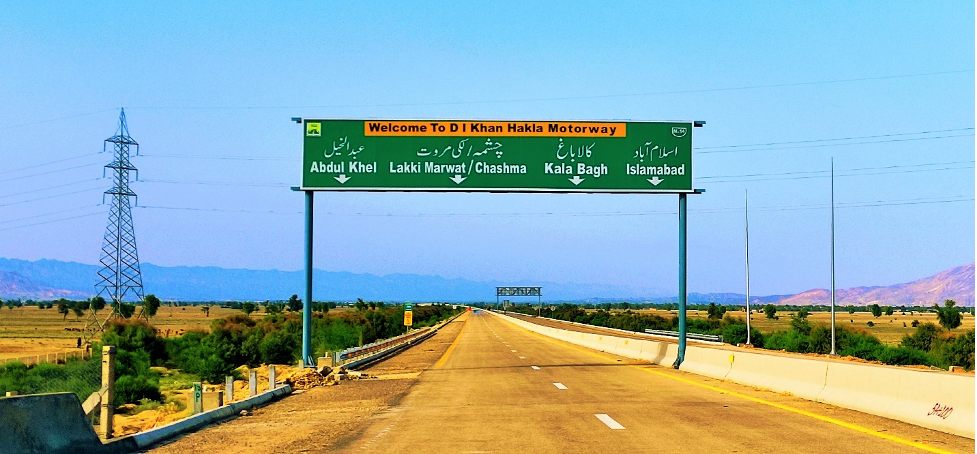
The M-14 Motorway is a four-lane north–south highway extending from Islamabad to D.I Khan. It is part of the Western Alignment of the China–Pakistan Economic Corridor, providing high-speed road connections. Regions of Khyber Pakhtunkhwa province, specifically Dera Ismail Khan.
Originally scheduled to open by the end of 2018, the motorway faced delays and was inaugurated on January 5, 2022. The construction began in May 2016, and the motorway stretches from the Hakla Interchange on the M-1 Motorway near Fateh Jang in Punjab to Dera Ismail Khan in Khyber Pakhtunkhwa. It follows a southwestern path, passing through Pindi Gheb, Jand, Tarap, and Mianwali. Crossing the Indus River near Mianwali, it enters Khyber Pakhtunkhwa and terminates near Yarik, just north of Dera Ismail Khan.
M15 (Hasan Abdal–Thakot)
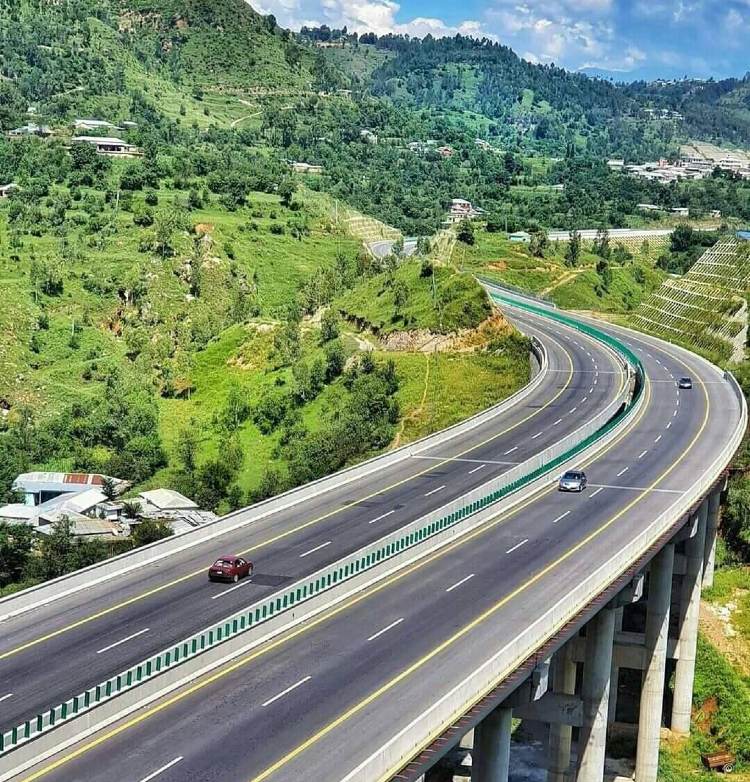
The M-15 Motorway, also known as the Hazara Motorway, is a controlled-access highway spanning 180 kilometers. It connects the Burhan Interchange in Punjab province to various locations in Khyber Pakhtunkhwa province, including Haripur, Havelian, Abbottabad, Mansehra, Shinkiari, Battagram, and Thakot. The motorway consists of seven packages, with the first four sections completed and inaugurated in December 2017, November 2019, and July 2020.
The motorway features varying lane configurations. It is a six-lane controlled-access road up to Haripur, four lanes from Havelian to Mansehra, and two lanes from Mansehra to Thakot. Along the route are five tunnels located at Abbottabad, Battal, Karmong, and Mansehra.
M-16 (Swabi – Chakdara)
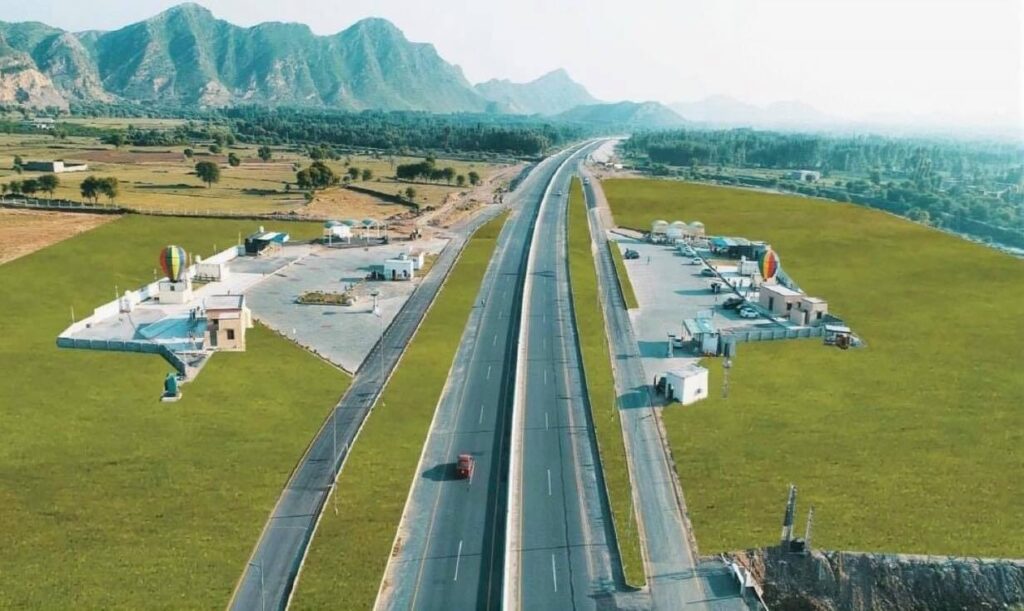
The Swat Motorway, also known as the M-16 or Swat Expressway, is a 160-kilometre-long four-lane motorway. In June 2019, Phase-1 of the project was completed, connecting Nowshera to Chakdara. The second phase is currently under construction to extend the motorway to Fatehpur.
Conclusion
Motorways have had a positive impact on Pakistan. They have improved connectivity, reduced travel time, improved safety, and helped to boost the economy. However, some challenges need to be addressed, such as the cost of construction and maintenance and the environmental impact.

